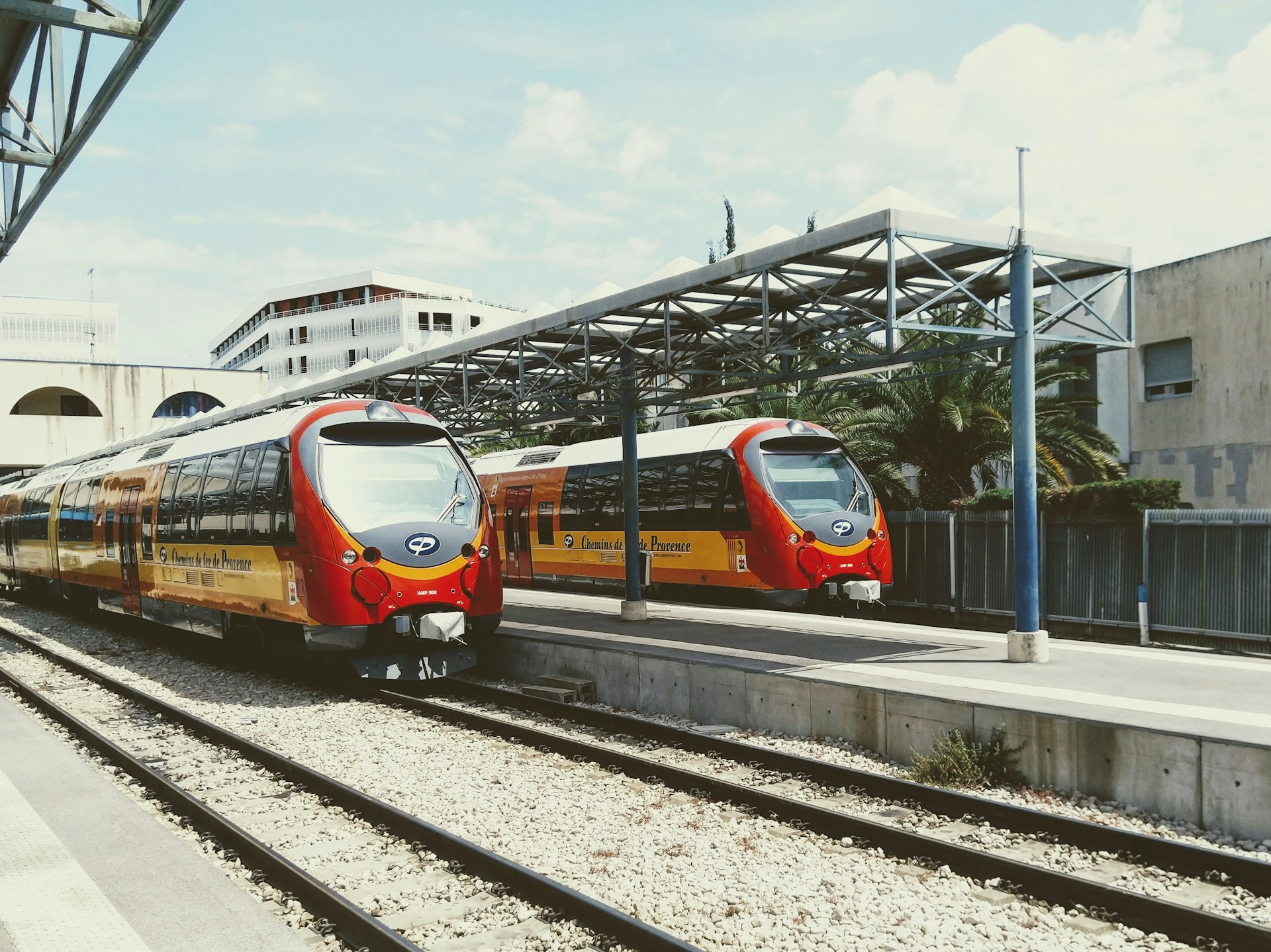Rail transport is emerging as an essential solution for sustainable mobility, thanks to its low carbon impact and technological innovations such as hydrogen trains and the digitization of infrastructures. In France, initiatives like the electrification of lines and the use of renewable energies support this commitment towards more ecological transportation.
But how can the rail sector continue to innovate to meet the challenges of tomorrow? What roles will new technologies play in improving the energy efficiency of rail? In this rapidly changing sector, how can companies recruit better?
Rail transport: A mode of transportation with low environmental impact
The rail sector represents a sustainable alternative to road and air transport, notably due to its low greenhouse gas (GHG) emissions per passenger and per kilometer traveled. According to the European Environment Agency (EEA), electric trains emit up to 80% less CO₂ than cars and planes over similar distances. This environmental performance is amplified by the increasing electrification of lines, supported by renewable energy sources such as solar and wind power, further reducing the carbon footprint of the rail network. By also limiting noise pollution and preserving natural spaces, rail transport has an ecological footprint far inferior to that of road and airport infrastructures. At a time when climate challenges are urgent, adopting rail as a mass transportation solution and strengthening its infrastructures becomes essential for sustainable and environmentally friendly mobility (source: EEA).
Rail innovation: an efficient and sustainable solution for mobility
Rail transport is a pillar of sustainable mobility, offering high transport capacity and a low carbon footprint. Innovations like hydrogen and battery-powered trains help reduce greenhouse gas emissions by up to 85% less CO₂ per passenger-kilometer compared to cars. Digitization improves operational efficiency by optimizing communication between infrastructures and vehicles. These advances help to decongest roads while addressing sustainable mobility challenges, especially in urban areas. France, with programs like CORIFER by Bpifrance, actively supports research and innovation in the rail sector, affirming its leadership in ecological transportation.
Electrification of lines
The electrification of rail lines is essential for the transition to sustainable transport. In France, about 70% of lines are electrified, significantly reducing greenhouse gas emissions. The Agency for the Environment and Energy Management (ADEME) highlights that electrified rail emits up to 30 times less CO₂ per passenger-kilometer compared to road transport. To support these efforts, several recovery plans have been initiated to modernize and further electrify lines. These actions are part of a broader strategy aiming to achieve carbon neutrality by 2050, as indicated in the European Commission’s report on sustainable mobility.
LED lighting and new consumption
Optimizing energy consumption also involves modernizing lighting systems in rail infrastructures. The use of LED lighting, which consumes up to 80% less energy than traditional systems, not only reduces operating costs but also improves user safety. According to a study by SNCF, transitioning to LED lighting in stations and platforms could lead to energy savings of nearly 50 million euros per year. This change is also supported by government initiatives encouraging companies to adopt greener technologies.
Digitization
Digitization plays a key role in optimizing rail transport. Through the interconnection of infrastructures and vehicles, it’s now possible to improve flow management and perform predictive maintenance. For example, the predictive maintenance system implemented by SNCF allows for anticipating breakdowns and reducing operating costs. According to a European Commission report, digitization could increase the efficiency of rail networks by 30% by 2030. In France, digitization initiatives also aim to integrate intelligent traffic management solutions, facilitating the smooth transport of passengers and goods.
The new generation of high-speed trains
The new generation of high-speed trains, including innovative concepts like the Hyperloop, marks a significant advancement for rail transport. These trains, which can reach speeds of over 300 km/h, incorporate advanced technologies to improve their energy efficiency. For instance, the Hyperloop project proposes capsules moving in low-pressure tubes, aiming to revolutionize mobility with travel times reduced by 50% compared to TGVs. Similar projects, like the Maglev in China, which can reach speeds of 600 km/h, reinforce the commitment of France and other countries toward transportation that is both fast and ecological. The International Union of Railways estimates that implementing these technologies could reduce CO₂ emissions by 30% in the rail sector by 2030, confirming their potential as a sustainable mobility solution.
A tight market and a talent shortage
The rail sector offers numerous career opportunities but faces significant recruitment challenges. Technical professions are particularly affected by a shortage of qualified labor, exacerbated by the scarcity of specialized training. Unlike other industries, there is no true “railway school.” Engineers in this field often train “on the job,” acquiring specific skills throughout their professional experiences.
This lack of qualified candidates, coupled with the increase in infrastructure projects to meet ecological and sustainable mobility challenges, makes the job market tight. Rail companies struggle to recruit for engineering, design, and maintenance positions, sometimes leading companies to compete for talent, especially for profiles capable of mastering the complex aspects of electrification, catenaries, or signaling. This situation creates an opportunity for engineers and technicians wishing to specialize in a forward-looking sector where skill needs are growing.
Thus, professionals who choose to turn to rail, whether through retraining or specialization, can benefit from stable careers and continuous demand, especially as companies invest in greener and more sustainable solutions.
Conclusion
As the rail sector embarks on the path of sustainability and innovation, it must address growing ecological challenges and position itself as the leading ecological alternative in transportation. The opportunities offered by new technologies invite sector players to transform their approach and meet this significant challenge.
